What can I say? Andrew Bosely is the wonderfully talented former Ubisoft concept artist and current freelancer and we get to interview him! Pretty awesome. We find out all about him, picked his brains about how his imagination unfolds, his artistic process, inspiration, the building of his career and so much more. Welcome to the Andrew Bosely Interview.
Kim:Hi is this Andrew?
Andrew: Yes, Hi!
Kim: First of all I wanted to ask you a little bit about yourself and get an idea of who you are.
Andrew: Sure, my background. I grew up in southern California. I have been drawing most of my life and I don't think that there was ever anything else that I could do or wanted to do. To draw and paint was what I wanted to do with my life. I went to college before that I was a missionary. That is my background. I wasn't the smartest guy in high school, so I applied to the Y but didn't make it. I knew that they had a fantastic program there for illustration in all the nation. So I was interested but it didn't work out, but I attended San Hose State University, I don't know if BYU thinks of it this way but some of the professors there think of it as kind of a sister university to ours. And the head of our program has a strong connection with BYU.
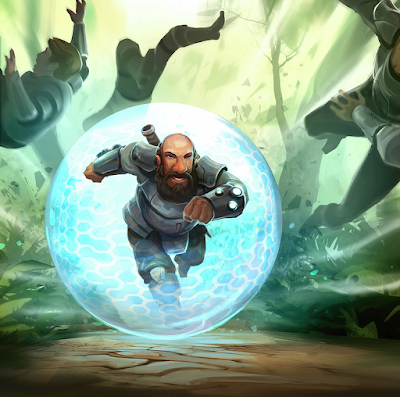 Kim: That is good to know!
Kim: That is good to know!How did you go about building your portfolio to get into San Hose State? Did you just keep drawing forever and ever?
Andrew: Yeah, I mean San Hose State didn't have a portfolio review to get into the school but a year or 2 of being there I applied to get into the illustration and animation program which required a portfolio review and a lot of preparation to do in those classes. So I was spending a lot of time focusing on foundation art stuff. I wanted to get in there and that is the biggest program at that school. Even though its just a normal state school it has a fantastic illustration program. Anyone that knew they were going into that program knew which classes they were taking, they were very specific. So there was a lot of preparation on the faculty's part to get people ready for the program.
Kim: Wow, that's pretty cool, you went ahead and got into that program. So let's talk about what made you want to be an artist in the first place? you talked about how you always just drew when you were little?
Andrew: Yeah, you know I had a very supportive family, so when I started drawing I know I drew on the walls a lot, I know my parents didn't love that part of it but they gave me lots of paper to work on. I know for myself it was really the only thing on my mind, supported and growing up as a kids around great animated films that were inspiring and motivating.
Kim: What were some of your favorite films you loved growing up?
Andrew: I was growing up in the beginning of the animation renaissance with the Little mermaid, Beauty and the Beast, Land before Time (the original one). I remember seeing them in theaters as I was a little kid and just thought it was the coolest thing in the world. That and An American Tale, Don Bluth films were really influential and your typical Saturday cartoon morning stuff.
Kim: That's awesome, so it was something natural for you to go into.
What inspires you as an artist? What gets your creative juices going?
Andrew: For me at this moment its more other artists, I am a little more observant and I would notice strange things around me and I would think, Hey that would make a neat story or what ever. I am primarily do concept art for video games. I have a lot of personal projects that I work on stories and ideas, so seeing the work that other people are doing inspires me. An artist in Germany named Daniel Liskae, he is a comic artist and visual development artist that spends a good amount of time in the entertainment industry but he has developed his own story named the Worm World Saga that I am a big fan of. Gosh there are so many people! As far people from history are people such as Joseph Lyndecker , Alfonse Mucha, you know the classic who we are look to like Howard Pyle, N.C. Wyeth. I keep a wall in my studio filled with just artists that I love, I the collect prints and have a wall filled with them! But certainly artists that I like that are around right now are people I currently work with, like Jake Parker, Matt Gazer is a great illustrator and concept artist. The artists at Creature Box. Tonnes of concept artists. maybe some that that aren't my style that are more realistic but still influential people like Eric Church and Ian Mckege, who are big big names working at Lucas Arts on Star Wars. James Gerney is a fantastic influence, one of my earliest influences was a former BYU professors James Christiansen. My biggest, biggest influence and hope and dreams for own career William Joyce the man I would who created the Moonbot Studios. I picked up his book when I was 13 years old and I am so jealous of David Wilson that he gets to work for him, and if I even got to have a phone call with him I can see myself totally doing freelance art for free, lol (wink, wink).

Kim: What made you think you want to get into concept art? And how did you do that?
Andrew: It all started with school initially, when I was first looking into schools I had met someone I had gone to church with who had been an artist at Odyssey games. He was big into the 3D modeling back in it's really really early days, and I remember him letting me come by to his studio once and he let me play around with his old SPI work station. It's obsolete now now but it was cool and exciting then. So in my head I was either heading for children's book illustration, which was always a big interest of mine or modeling in video games. Because that was an interesting thing that I had been exposed to. So looking for schools I exposed to the facilities that allowed me to do this and it was great but as I was taking classes I found this Art of Star Wars book, in somebody's stuff there and I didn't even know that concept art was a real thing. As soon as I saw that and thought I could drawing all day long, drawing cool things, making up stuff that doesn't exist, I thought that is exactly what I want to do so I just dedicated everything to that for the rest of time in school and thankfully it worked out.

Kim: So, what was your first job?
Andrew: Yeah, outside of school I did a lot of freelance in that industry I worked as a contract artist at a company called Factor Five, which is a studio in Northern California and I worked for them for a little while as I was graduating. Prior and all through school I was married and had kids, pretty much the entire time I was in school the 5 years I was there. So I had a full time business painting murals in the bay area and that was fun. I also worked at Hallmark cards as an illustrator for a summer. But as far post school my first gig out of school was Ubisoft. I worked for there Wally studio and was there home entertainment branch when I graduated in 2006 and I was there for 7 years, and I worked with a lot of different game titles and studios that where part of the Ubisoft network. That was great.
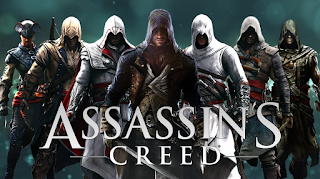
Kim: What games did you work on while you were there?
Andrew: When I worked there I worked on a bigger title Ghost Recon: Future Soldier, a more realistic a first person shooter type of game. I worked on Rainbow 6 because of its a similar style, the company RedStorm 6 that I worked for was actually founded by Tom Clancy, the author and before we were owned by Ubisoft, that studio did a lot of titles related to his work. And then after Ubisoft the company continued to work similar to that however, I was also working with a lot of other studios on lots of different projects, so I worked on Assassin's Creed briefly. I worked on the Magic Franchise for a good long while. A lot of new properties that were being developed, so I spent a large part on my time working on pictures for the new games or the really early stages of things. There that was going to be a big franchise a big brand, that not many people know about, a game called Les Steel, when the movie first came out, they had a sequel and I was working on the 2 sequel to that, and this a project where the sky is the limit and its the kind of job you dream about but the game was never made, but that happens a lot in the game industry.
Kim: So are you working in the game industry closely right now?
Andrew: I am. I decided about 3 years ago that I wanted to work freelance full time. So I left Red Storm and I have been independently working as a concept artist and illustrator, not many big names but I did worked for which ever studios was in need of illustration work, that keeps me busy.
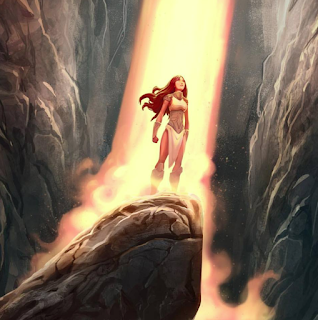 When you went from a student to a professional when did you know that you made it as an artist?
When you went from a student to a professional when did you know that you made it as an artist?
I know i can do stuff because I have been doing professionally for 10 years. I don't know if there is ever a point. I have talked to friends many a time about this as in I have made it now or an successful now. I really know what I am doing and I think there are plenty of artists know what they are doing. But I think many artists are generally self conscious and I am a 100% on that side of things, there is only occasionally when I actually confident. I was extremely pleased and felt fortunate that I got the job that I did when I got out of school. Any confidence that I have or have had in the past is out ok I have a job so I must be valuable to somebody. It's something you have to just work as hard as you can and push yourself till you find the right people who want your work.
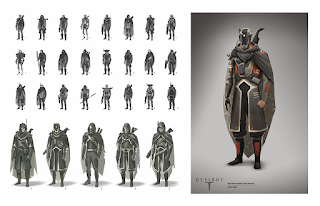
Kim: What is your artistic process? Do you sit down and sketch? How do you gather ideas?
In the ideal situation I would be looking for things that inspire me, so that I can come up with interesting designs. I spend a lot time reference gathering and a lot of sketching. I would say its funny, in the video game industry especially now, its becoming more and more of a problem which maybe we will break out of soon, is there is a big confusion between illustration and concept art. These are two very different things that require often similar skill sets. So I don't often in my profession get a chance to do real concept design, which would be sketching and coming up with new designs. I mean some of my clients now have some to me and that is tones of fun, and sometimes at Ubisoft, but a lot of the time its just pure illustration work. A lot of times its 'give me an idea of something and we are going to roll with it'. Often I am not given the time I would like to come up with the best idea but process when its my own thing, concepting a short story that I am working on its a lot of sketching. A lot of artists have cool stuff in there sketch books and I just have a bunch of crazy sketches that no body understands :)
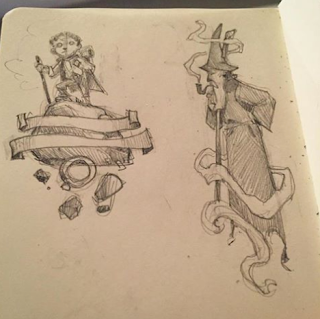 So its like a catalog of ideas that you can pull from when you need to come up with an idea?
So its like a catalog of ideas that you can pull from when you need to come up with an idea?Yes and that can be done traditionally but recently I have just been working I started working in Itap pro which is really convenient, its a little ways from my sketch book but I feel like I can just jump into working digitally. Which I do for 99% of the time for actual work I deliver to clients. So as soon as I am done sketching and referencing, I go straight to photoshop.
Which software do you use?
Primarily Photoshop most of the time, recently there have been times I have worked entirely on my I Pad which you can't photoshop but the app I use is pro create which is a fantastic app. When I work at the computer it is in photoshop.
Do you have your own set of brushes that you have developed over time?
Yeah, all of us borrowed and chopped up and cannabalised the brushes to death. I am settled on my own that I have and when I look at other peoples work, I look and think 'yeah I've got that brush'. Most concept artist and digital artist develop their own time, you first start out with the common ones and then you make and find really cool ones and grab it and turn it into your own thing.
Did you find that it was a hard transition to go from traditional to digital? Or was is easy?
It was hard. I was all traditional most of my time in college, but I was introduced to digital the last few years there. So I was already taking visual development courses before I was working digitally so I can look back at the sketches and painting but it took me a couple of years before I was a 100% digital like I am right now. I may sketch to explore a couple of ideas completely out of the blue. But 7 years ago I would sketch out an entire design, scan it in and then color it in Photoshop. Now most of the time from the very beginning other than the few scratches in my sketchbook, the entire thing is digital.
What is your favorite thing to draw? If you could draw anything what would be your choice?
I am funny guy, I think I am a commercial artist to the core. So I have so many projects in my head, so many stories that I want to write, so many different things that I sit down and paint for fun. Usually its places, coming up with places that haven't been thought of before. Even my stories I am working on now, is really based around a character exploring the thousands of places that are in my head. He prefers exploring locations he hasn't seen before so when I am in that mode I am thinking about what those places might be.
Do they just come out of your brain or is it from something you've seen?
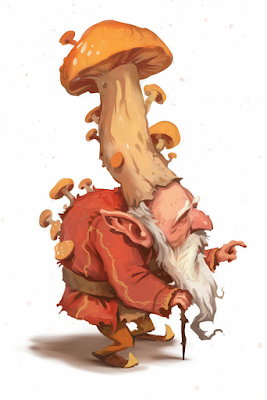 It's from something I have seen, this entire ideas itself came from when I would just drive around and see something that look I think looks like this, but in reality I know that it's not.
It's from something I have seen, this entire ideas itself came from when I would just drive around and see something that look I think looks like this, but in reality I know that it's not.When I used to live in North Carolina I would drive by a fire hydrant that looked like a gnome pushing a cart and I kept thinking, wouldn't that be a funny story. If this fire hydrant was really a gnome and nobody knew, its just forgotten and people just keep driving past but its really this special thing that nobody notices. And at the same time. I would see these old barns that where around 70, 80, 100 plus years old . It's just me thinking what if this world really was filled with magical places and that nobody notices. SO my inspiration comes from observation but a lot of the time now I have an idea and so I go and search for places like photography websites, nature websites so I find something cool and I say what would it be like if this was really like this, of what if something was on top of that mountain instead of nothing.
Kim: That is wonderful to see how your imagination works and group things together, its cool!
If you were just starting out and had to give advice to your younger self or anyone what would be the number one thing they would need to succeed?
Andrew: Sure. I wish I had been a bit more disciplined when I was younger. It's rare to find a younger student who is motivated. In college I always felt like I was behind and wish I had sone some of that stuff earlier, because I was very passionate about my art for a very long time but for a long time it was completely aimless. And I never think I always thought of myself as a fine artist who could just draw whatever, I always had projects and ideas that would make a cool story or movie. But I never directed them in a good way towards those ideas or developing my skills well enough that I could actually do something with them sooner. So when I think about advice and I give advice to a lot of students often. And one of the things that I feel like I missed was dedication at least a portion of my time of drawing and painting to the study of things that I see. Drawing from observation, painting from observation. My general advice to kids who are getting started in this is 50% imagination and 50% drawing from observation, because the skill comes from in my opinion from what you see. If you spend all your time on just the things that are in your head then your just going to do the same short cuts over and over again. You are going to draw a persons nose exactly the same way you've drawn it forever and you will continue draw it the same way. You'll draw a tree exactly in the same way from your head, and one its not as creative as people think drawing from your head and also you are not developing your skills because you are not learning to see things. But then at the same time if you are only doing observational drawing and not exercising creativity in your head you may end up being a scientific illustrator, and that is a wonderful profession and a totally cool thing but if you want to be a concept artist or an illustrator and work in the entertainment business or be a children's book illustrator you need both. You have to do both to have the skills and come up with interesting ideas that people want to read etc.

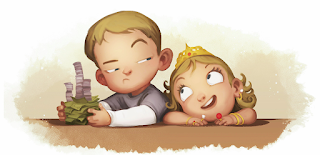
Do you have any projects that you are excited about you are working on right now?
This particular story I am working on I am very very excited about. wish I could say but I have started on projects before and I have announced them and then I decided to go a different direction. And its really kind of embarrassing, but its almost close to being done. It's a story about magical places and a story that brings people to magical places as a tour guide. It fits with the fun things that I like to do like designing worlds and fun locations and magical things. And if I can add a story to it to make it a bit more fun than a travel guide.
So you are going with a book format?
Yes, so I am at the point where I am writing it up, I spent a lot of time 'concepting', and now I am writing the text of the story and its not far away. I will posting concept art and other things very soon. I already have some art but nobody knows that I am doing this project.
(Psst, this is an image from this project. Watch out for more on Andrews Facebok,
Andrew Bosely Art)
It was a combination of both things, a big portion especially as a free lance artist has come through people that I have known. It all started with this one job at Ubisoft, which was a great job. I was ready to go for a while, I had met so many people and had such a fantastic experience but alot of them moved, in the gaming industry in particular we go to different cities and things are changing all the time. So the people that I worked with at Ubisoft are now working all over the world at different companies. I had good experiences with them and they had been happy with my work so they call me and say I hey I need this done and I will work with them. Besides that I have been fortunate again while working at Ubisoft to have my work show cased at different sites and so that has brought some recognition and reputation that brought work. But also work from going finding and talking to people. I go to conferences, I'll meet and introduce myself to people. Its a hard business but it is definitely doable if you are working hard at it.
Thank you this is awesome stuff Andrew we really appreciate it. This information is so invaluable on what it takes to be a concept artist. Thank you again for your time, you are so very gracious and kind!
Andrew currently lives in California with his wife and family. CHeck out his stuff here at www.bosleyart.com or https://www.facebook.com/search/top/?q=andrew%20bosley%20art
Andrew also hosted a live hang out where art students and professionals hang out and shoot the breeze together. twitch.tv/theartlounge



















































